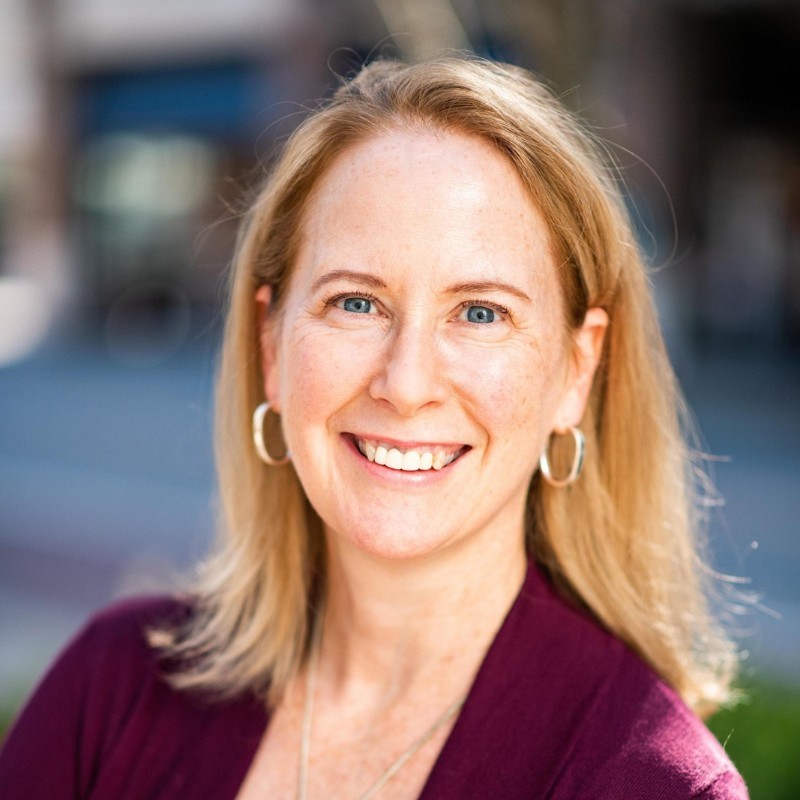Commercial, Energy Efficiency, Industrial, Commercial, Finance, Industrial - November 1, 2023 - By Abby Johnson
Developing an Innovative Clean Energy Financing Tool
The following conversation is excerpted from an interview with Abby Johnson, Executive Director and Founder of Virginia PACE Authority, in Smart Energy Voices Episode 86. Johnson won a 2023 Women in Smart Energy (WISE) Award in the category of Industry Veteran.
First, introduce us to the Virginia PACE Authority.
The Virginia PACE Authority is a 501(c)(3) we founded in 2019 to specifically administer PACE programs in the state of Virginia for the Commonwealth of Virginia. We did this because it was important to have a nonprofit to interact with local governments and the state government in a transparent way. It was also the culmination of years of work in the C-PACE industry through Abacus Property Solutions, where I saw a real need to step up and create an entity that would manage the state.
C-PACE, which stands for Commercial Property Assessed Clean Energy, is an innovative type of financing that allows for private building owners to use private capital, but they're obtaining a highly advantageous type of financing because it is secured as a special assessment on the property. This mechanism, where the public side ─ the local government ─ agrees to make this voluntary special assessment, gives the property owner access to up to 30 years of fixed-rate financing that has no personal guarantees and allows for a broad range of installed measures. That is where the public-private partnership comes in. It’s really advantageous but there is some education that needs to go along with it — from explaining the process of qualifying from the program standpoint, which is what we do, to qualifying for the loan from the capital provider standpoint.
When you started with clean energy financing, what were your initial goals?
The way PACE works is that you have to have a state pass legislation to allow a private property owner to ask the local government to place a special assessment on its property to access C-PACE, which is very favorable for these kinds of measures or improvements. So we spent a lot of time working with states like Texas, Florida and Virginia. It was a list of nine or 10 states where I was involved in getting legislation passed and amended at the state level. Then we looked at where existing organizations were already active in trying to get it working at the local level, because you also need a local ordinance to be passed to allow the assessments.
Growth in the industry really started in 2015, as organizations within all of these different states would, locality by locality, jurisdiction by jurisdiction, get PACE enabled. It started out very small, but now there are at least 37 states that have PACE.
What types of projects are you looking to fund?
There are retrofit projects ─ existing buildings that have old equipment ─ which can range across a wide variety of energy efficiency measures like HVAC, lighting, and water to all sorts of renewables such as solar, wind, geothermal, CHP, etc. Also, C-PACE allows for ─ at least in Virginia and Maryland and five or six other states ─ resiliency measures. This is important when you think about hurricanes, flooding events, or storm issues, and that can play into renewables with strategies like solar plus storage, for example, in terms of backup for nursing homes.
C-PACE also allows for the ability to make sure your asset is going to be around for another 10 to 20 years. Commercial building owners are looking to it to make their buildings more green and more efficient from both a policy standpoint and an economic point of view. But there are also measures you can do in C-PACE that help make sure that lenders for a senior mortgage, or insurance companies, are comfortable that an asset is going to be protected over the medium- to long-term. PACE provides a wide range of those benefits.
We look to qualify as much as we can based on the quality of the project. I would say the shift in terms of the kind of construction has gone from the retrofit market to new construction, or gut rehab, simply because in C-PACE, you have to get the consent of the senior lender. And that's easier to do if you're all at the same table discussing the project and what capital needs there are for the projects.
In working with both government entities and private companies in this public-private partnership, what is your basic approach?
There are actually more than two that we deal with. It’s kind of a three-legged stool, because we have the government entities who we work with to enable the legislation both at the state level and the local level, and we also have the property owners and their selected service providers. Then we have the capital providers who are bringing the projects often, but they have a certain kind of timeline that is very different than the government timeline. It's definitely an interesting orchestration. I feel like a conductor sometimes!
How do PACE programs across the U.S. relate to each other?
The PACE capital providers, who specialize in C-PACE financing, bring projects to different states, so we hear about different projects through them. We're kept up to speed on their terms, what the markets are like, and what kinds of projects are being funded.
Then at the program level, we have PACENation, which is a national organization that manages PACE. That gives us a way to interact with our colleagues in other states who run programs, but we also have informal groups that meet monthly to talk about issues.
What's next for Virginia PACE?
We've seen a gap, particularly in Virginia, between helping the property owner or developer see all the different kinds of economic development incentives out there and having them all presented to them in a way that makes sense. Say it's an old hotel, and they come to you to use PACE. Maybe they're using historic tax credits, or maybe there's an industrial revitalization grant out there. Our being able to have a database or some way to efficiently provide, and help them obtain, other kinds of incentives is a goal we're looking forward to in the next three to five years. We want to provide that central service of clean energy incentives and economic development incentives in one place.
For people in need of services in different areas, how are the connections made?
We do our own outreach to jurisdictions to talk to them about why they have C-PACE. We talk to their economic development departments who may have projects that could use C-PACE. We do outreach to property owners, to contractors who would install the work. They also find us through the capital providers who are out there marketing. PACE is certainly something that's still relatively unknown, so I appreciate the opportunity to talk about what I do, what the organization does, and our product as a whole.
Listen to our full interview with Abby Johnson and enjoy other in-depth conversations with industry experts and leaders of the energy transition in the Smart Energy Voices podcast series. Learn and find inspiration in their stories, insights, and visions for the future by listening and subscribing to the podcast here.
 Abby Johnson is Executive Director and founder of VPA. Since 2012, Abby has specialized in PACE financing, advising commercial building owners, lenders and public sector clients in PACE project and program development including crafting of PACE legislation, creating program guidelines, and launching and administering PACE programs. She has been instrumental in developing PACE programs around the country in Pennsylvania, Texas, Illinois, Florida, New Jersey, Louisiana, Oregon, North Carolina, and the Mid-Atlantic region, including Virginia. In Virginia, she was largely responsible for expanding PACE over the last five years to include resiliency, stormwater management, commercial condos, and retroactive projects. In 2019, she founded VPA to offer Virginia localities a low-cost, nonprofit option for program administration. Through Abby’s leadership, VPA has received multiple grants, including one that is funding the creation of a web-based platform that connects lenders with borrowers to fund resiliency and clean energy projects. In her capacity as an advisor, Abby works with building owners to develop “PACE-able” projects, structure PACE within the capital stack, and source senior debt as needed.
Abby Johnson is Executive Director and founder of VPA. Since 2012, Abby has specialized in PACE financing, advising commercial building owners, lenders and public sector clients in PACE project and program development including crafting of PACE legislation, creating program guidelines, and launching and administering PACE programs. She has been instrumental in developing PACE programs around the country in Pennsylvania, Texas, Illinois, Florida, New Jersey, Louisiana, Oregon, North Carolina, and the Mid-Atlantic region, including Virginia. In Virginia, she was largely responsible for expanding PACE over the last five years to include resiliency, stormwater management, commercial condos, and retroactive projects. In 2019, she founded VPA to offer Virginia localities a low-cost, nonprofit option for program administration. Through Abby’s leadership, VPA has received multiple grants, including one that is funding the creation of a web-based platform that connects lenders with borrowers to fund resiliency and clean energy projects. In her capacity as an advisor, Abby works with building owners to develop “PACE-able” projects, structure PACE within the capital stack, and source senior debt as needed.
Nominations are now being accepted for Smart Energy Decisions’ third annual WISE Awards to celebrate Women in Smart Energy. Women are doing important work in energy and sustainability, yet they remain underrecognized and underrepresented. We want to bring to the fore their significant, influential achievements as a way to recognize their role in the energy transition and to inspire others with their accomplishments. Awards will be presented to women in six categories: Innovation, Product/Initiative, Leadership, Mentorship, Rising Star, and Industry Veteran. A seventh award will be presented to a man in the category of Advocacy.
Share this valuable information with your colleagues using the buttons below:
« Back to ColumnsStay Up-To-Date












